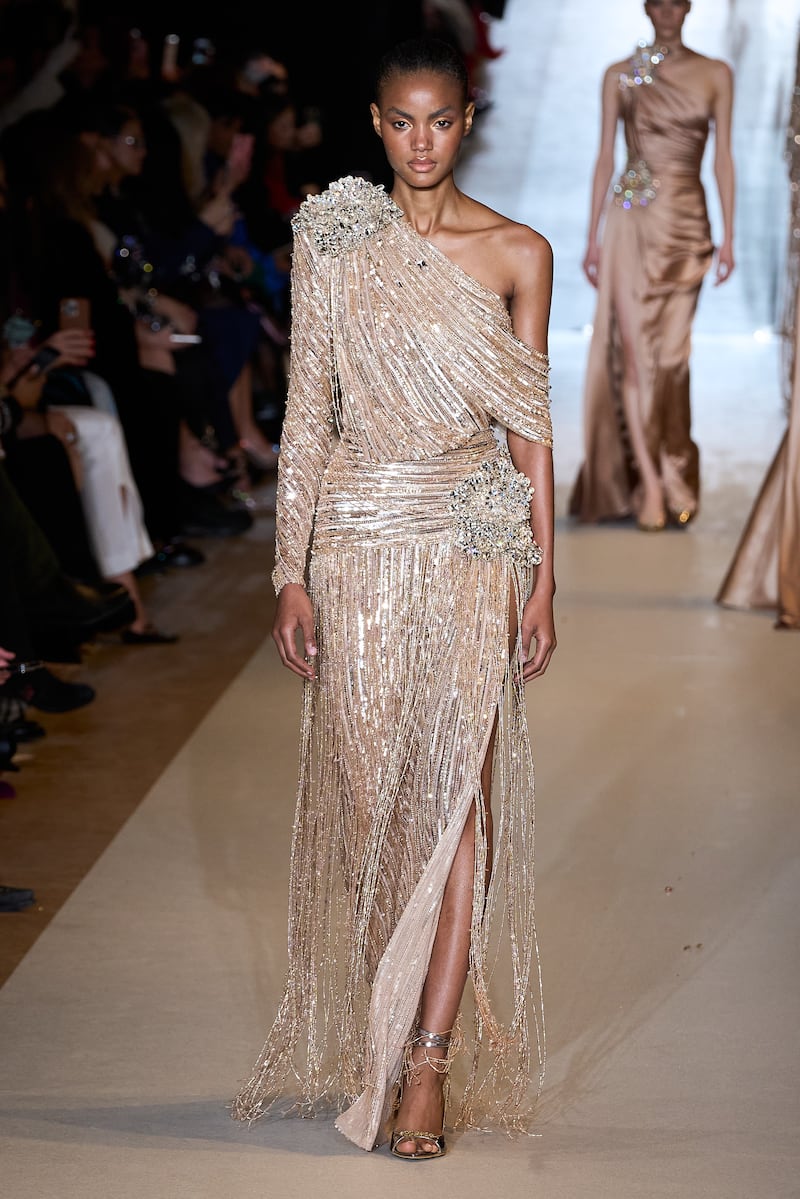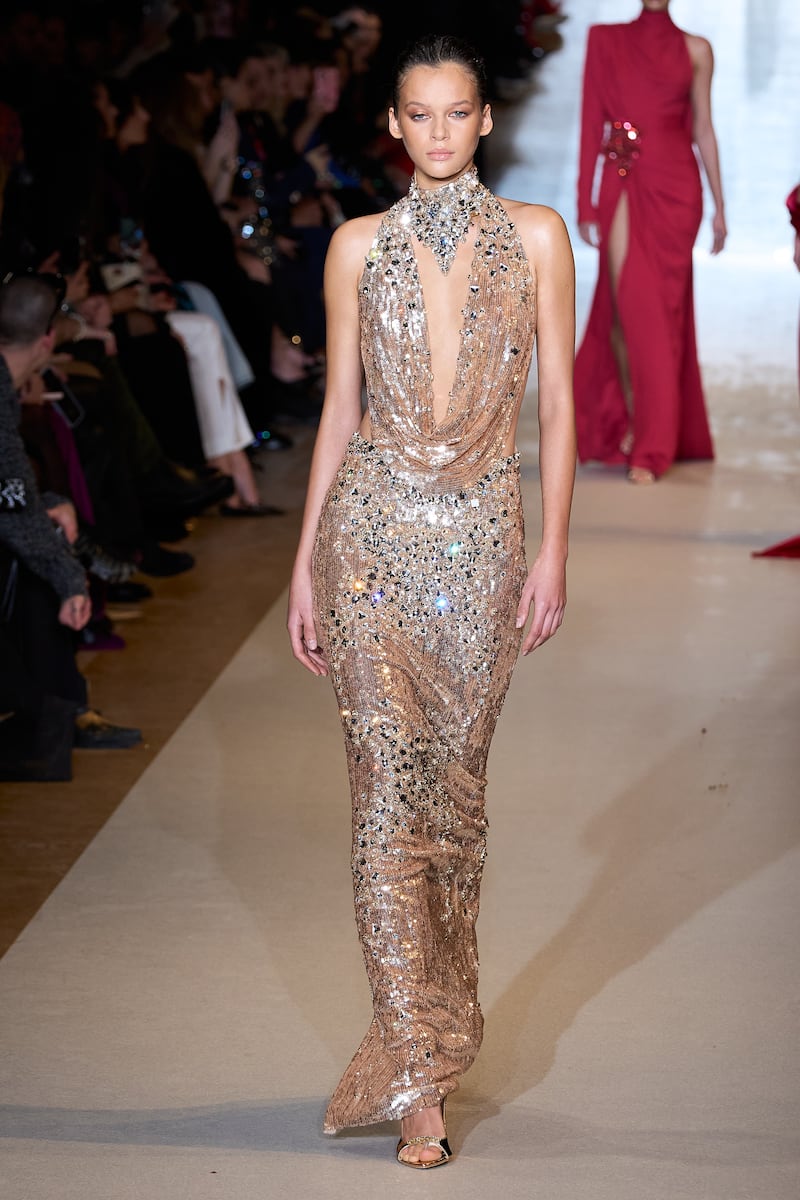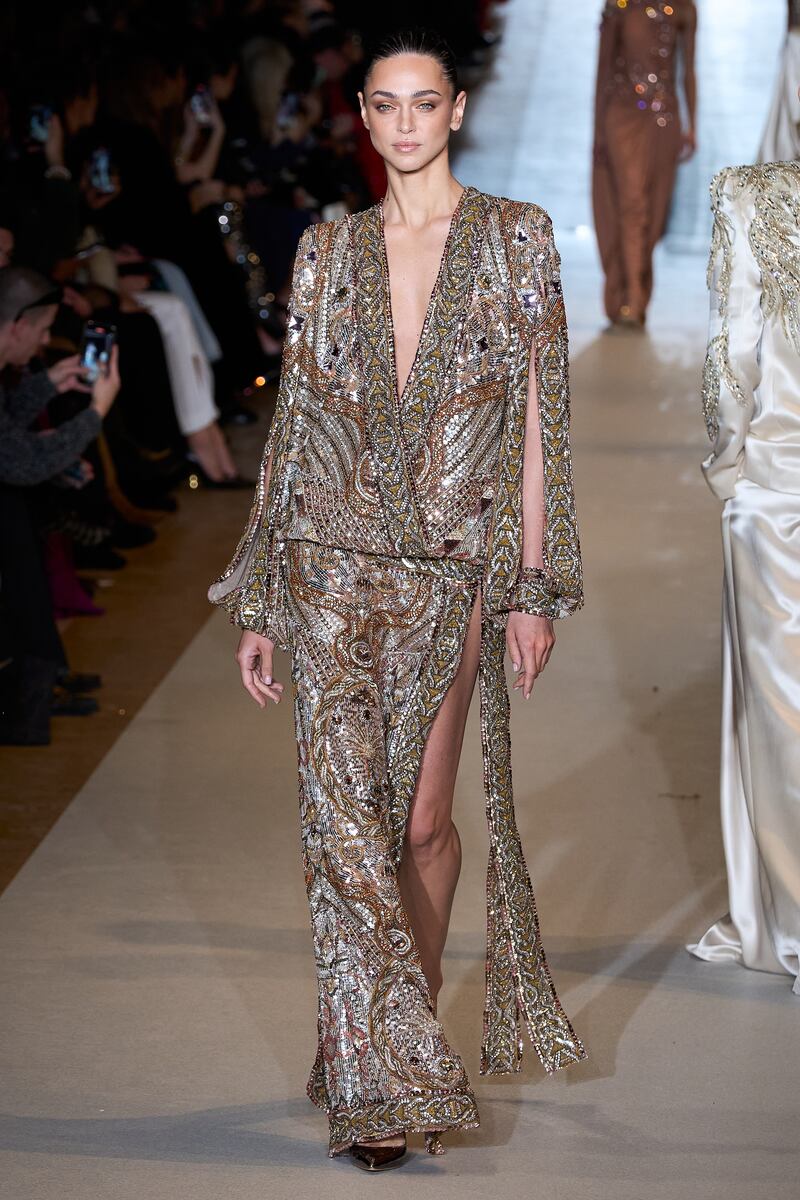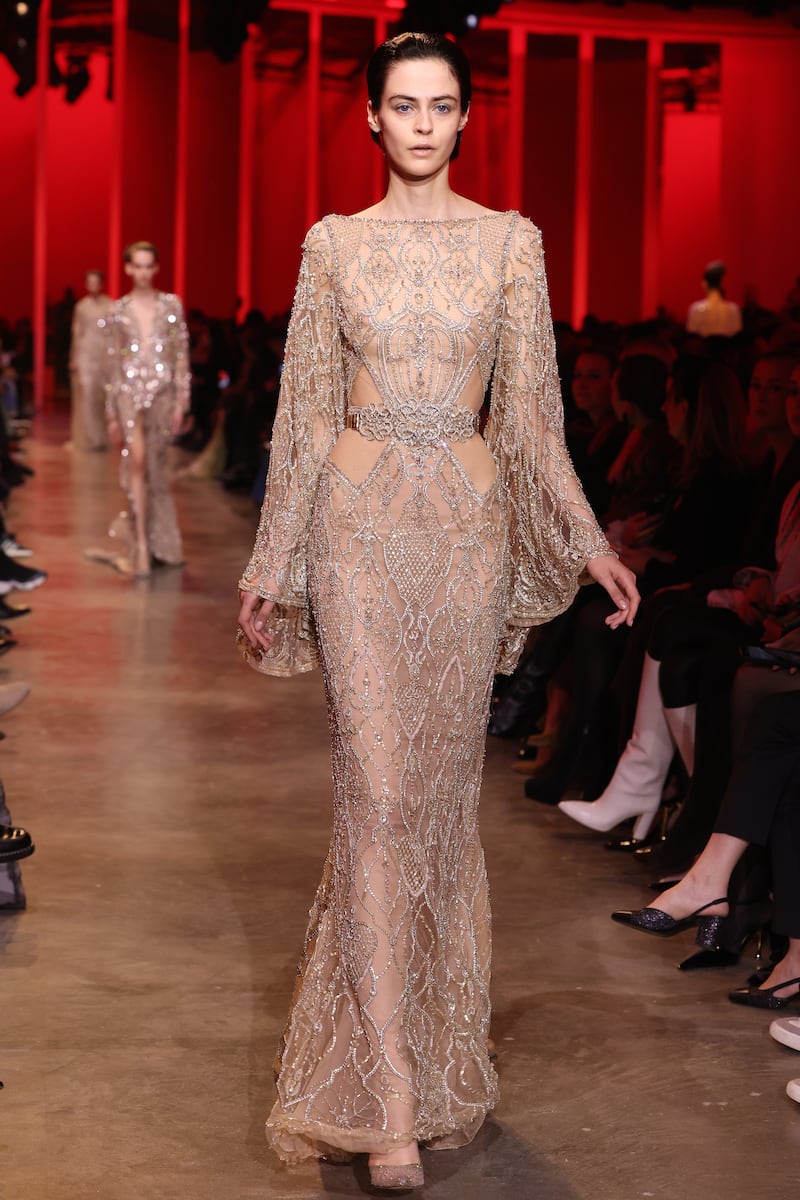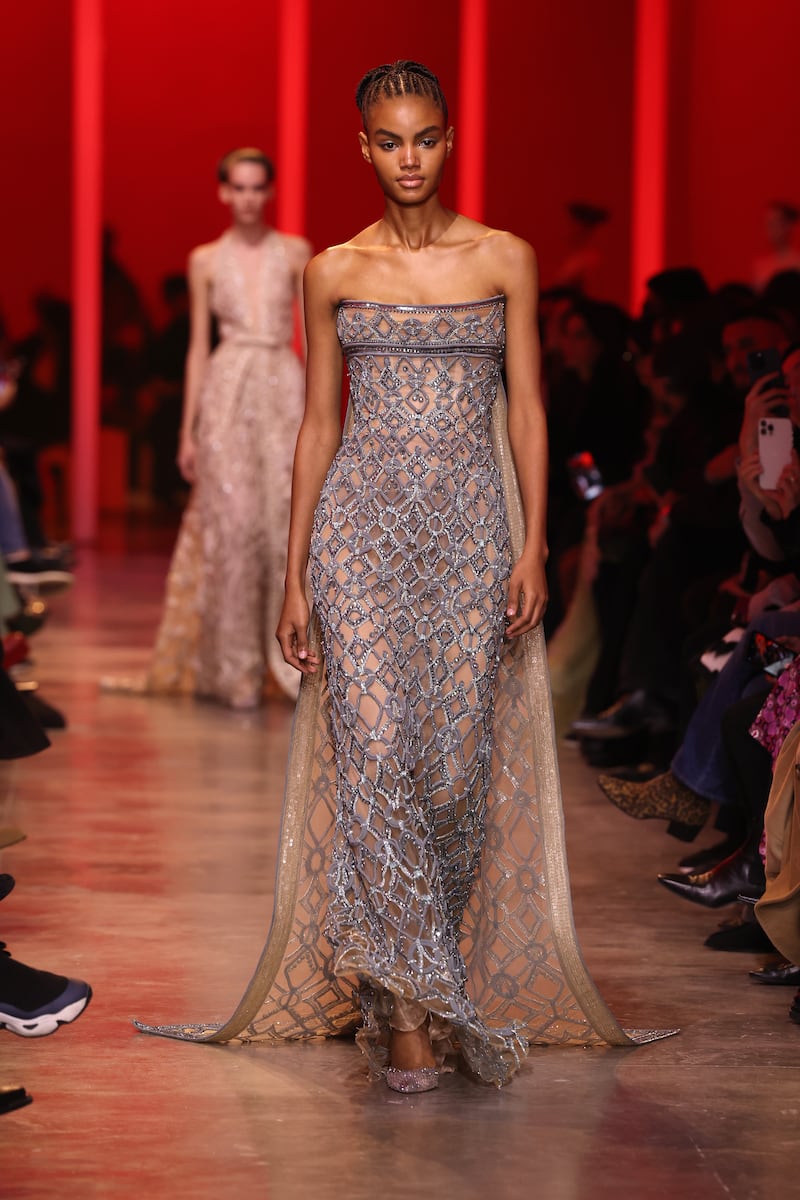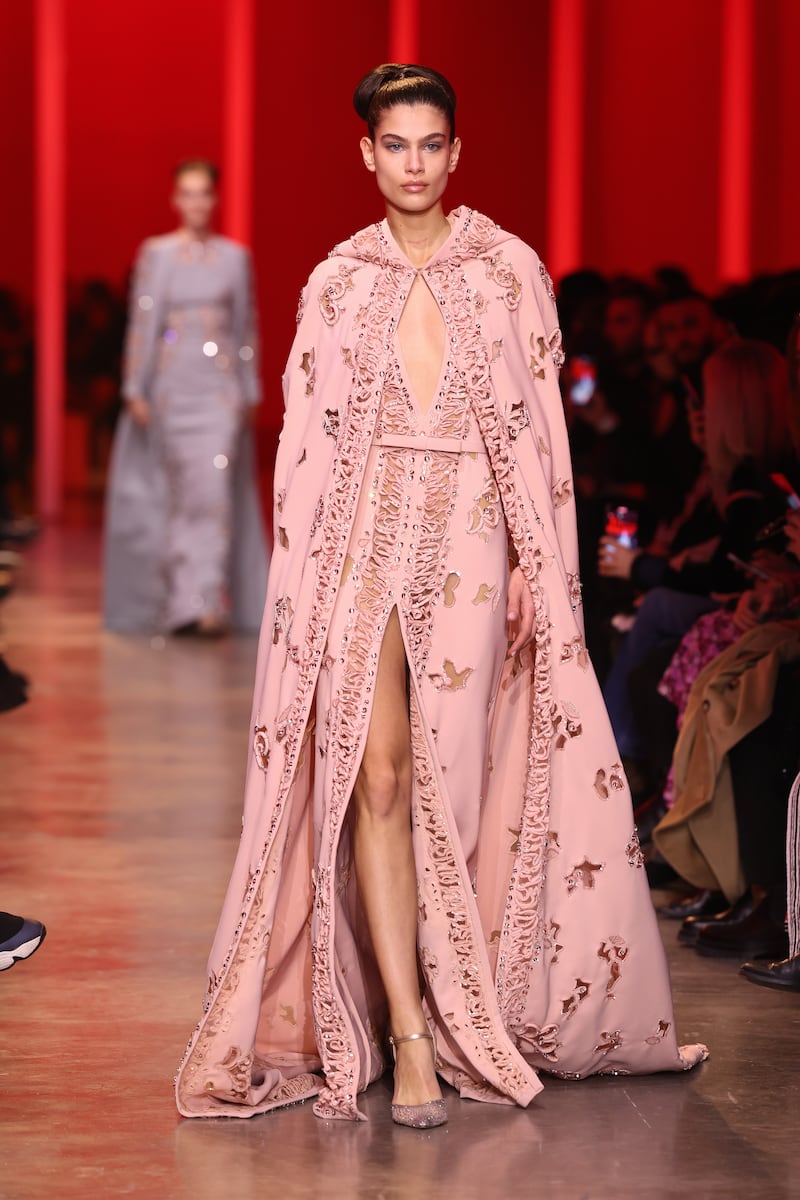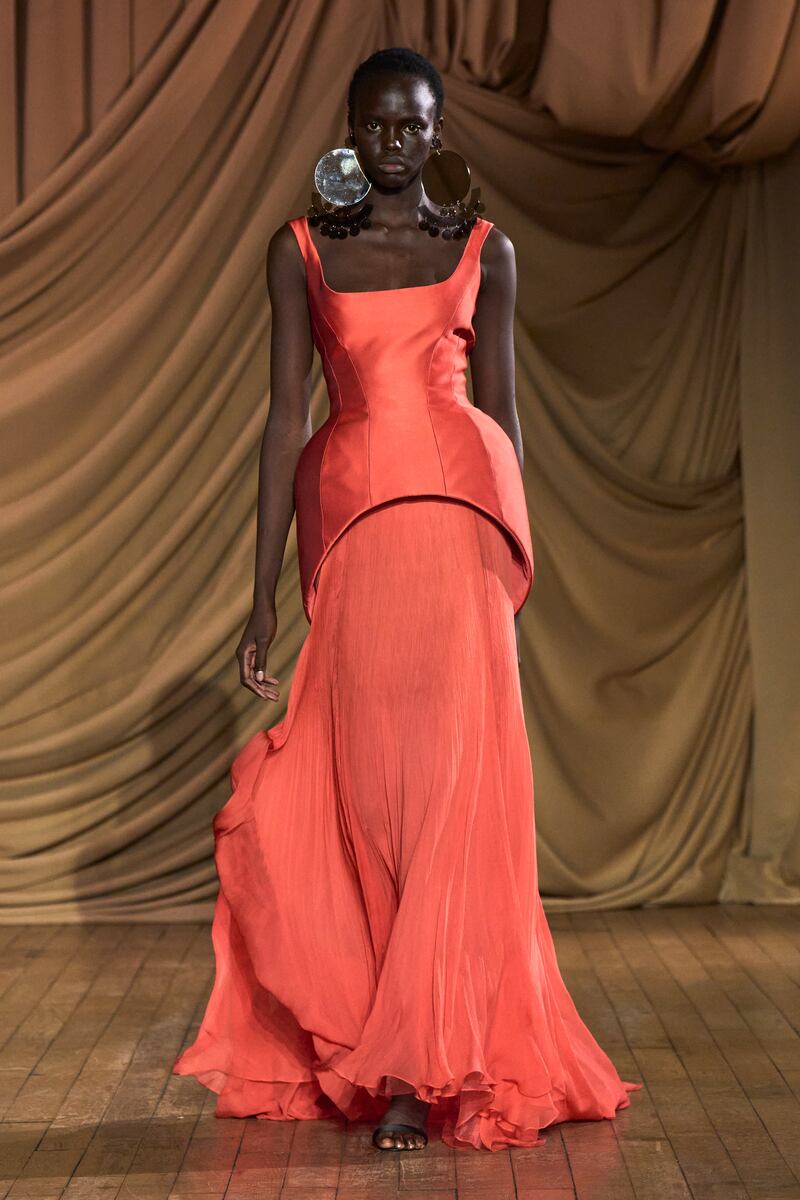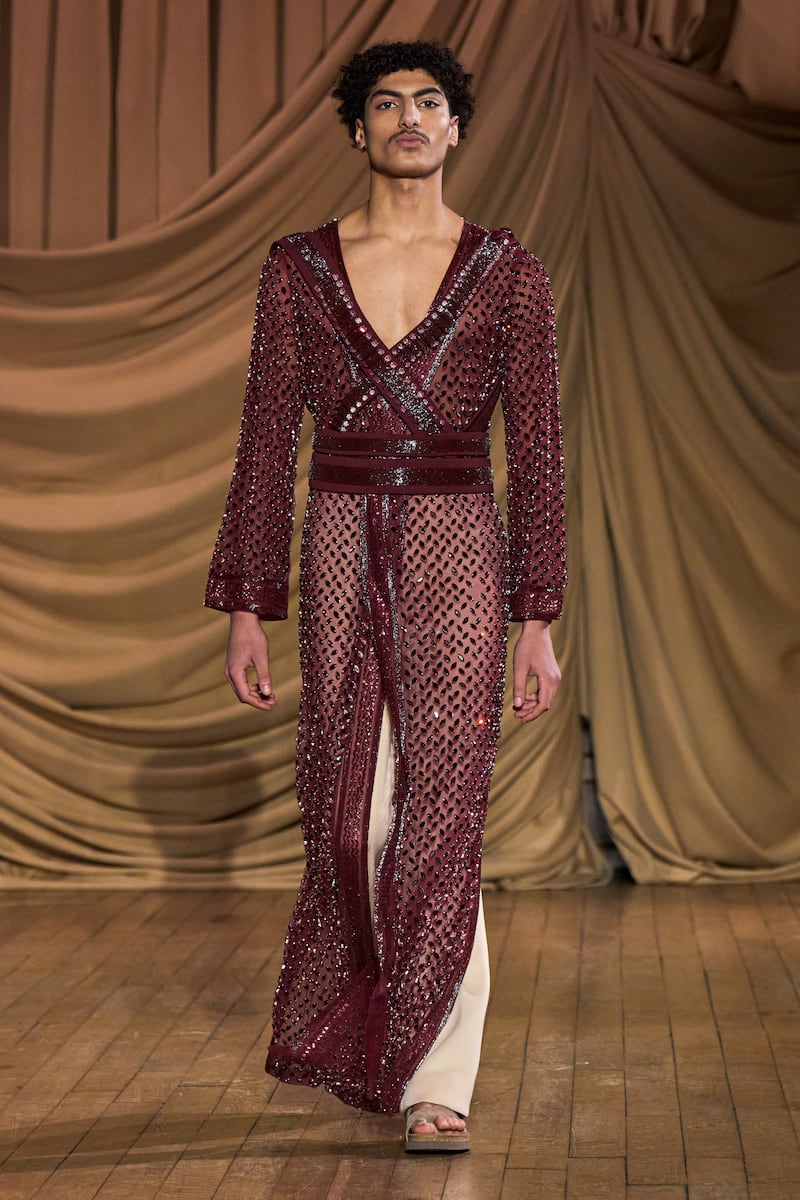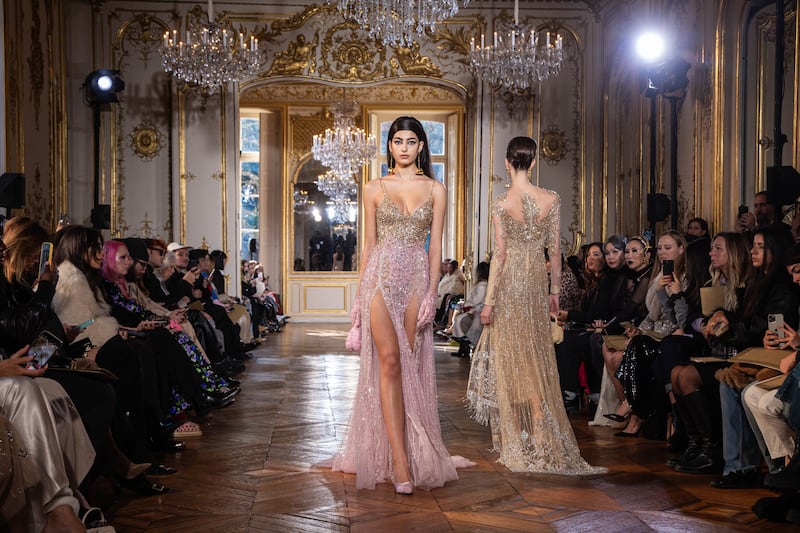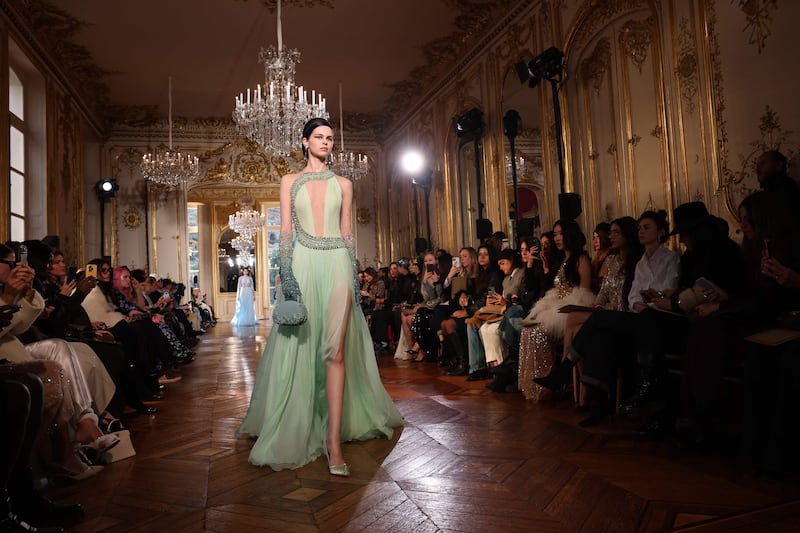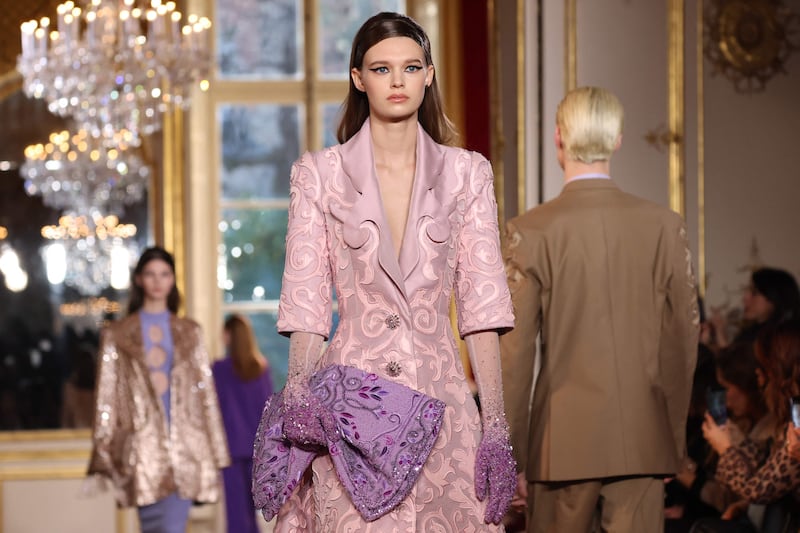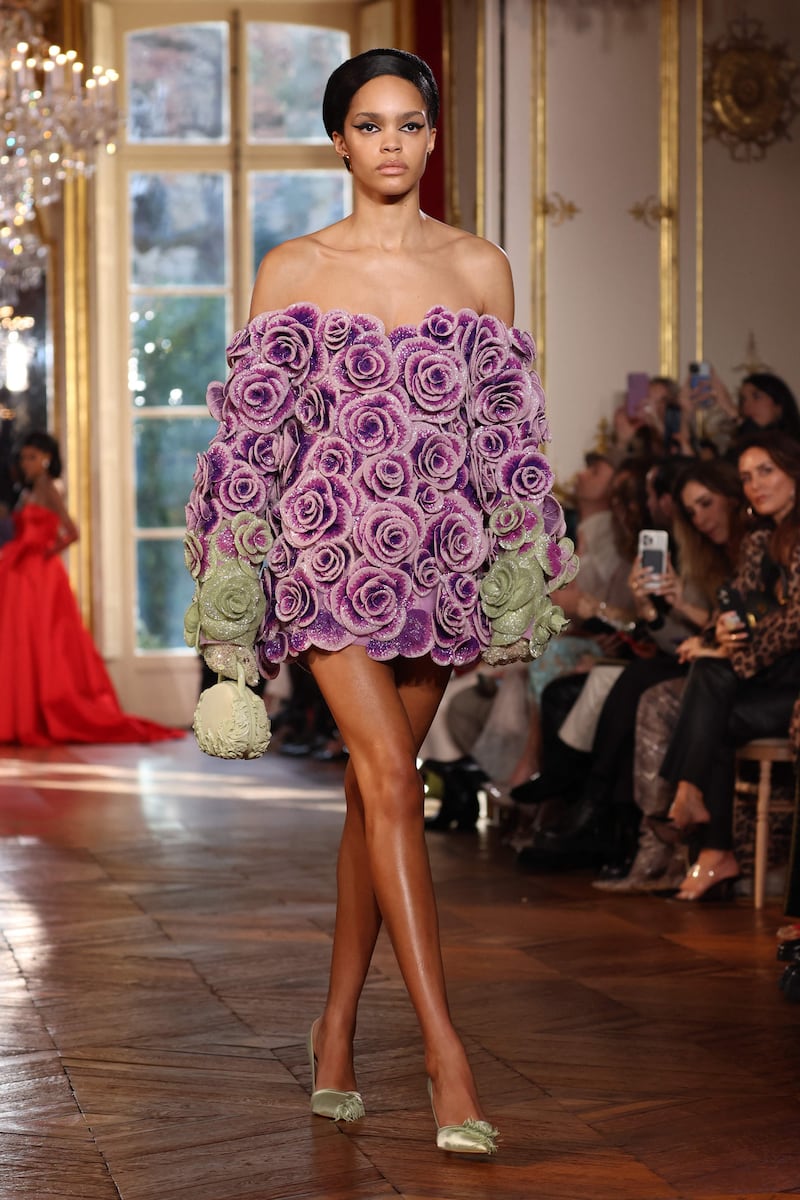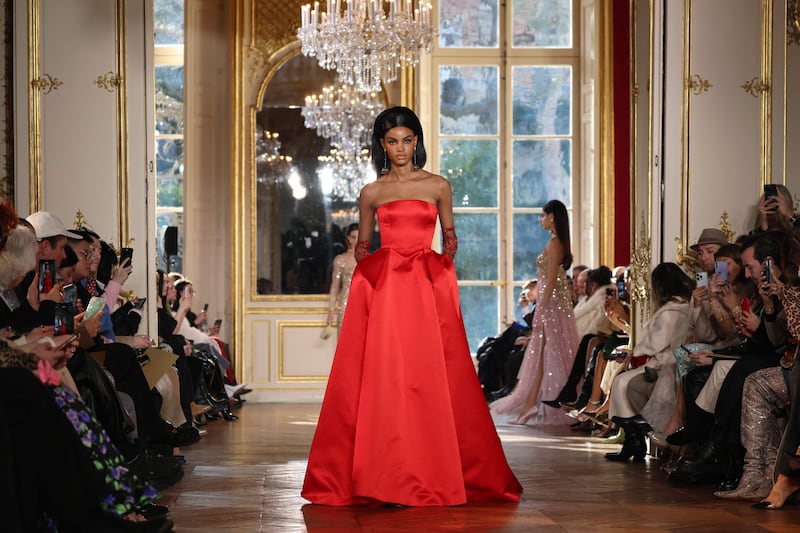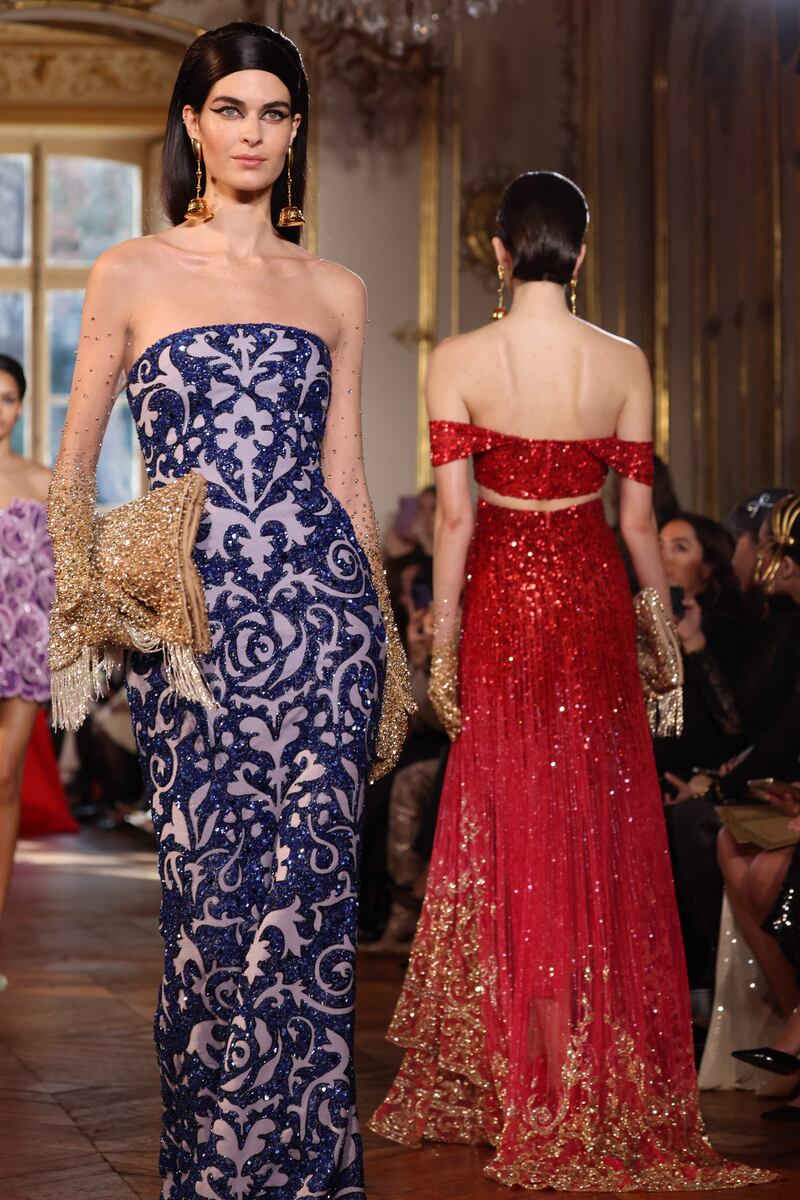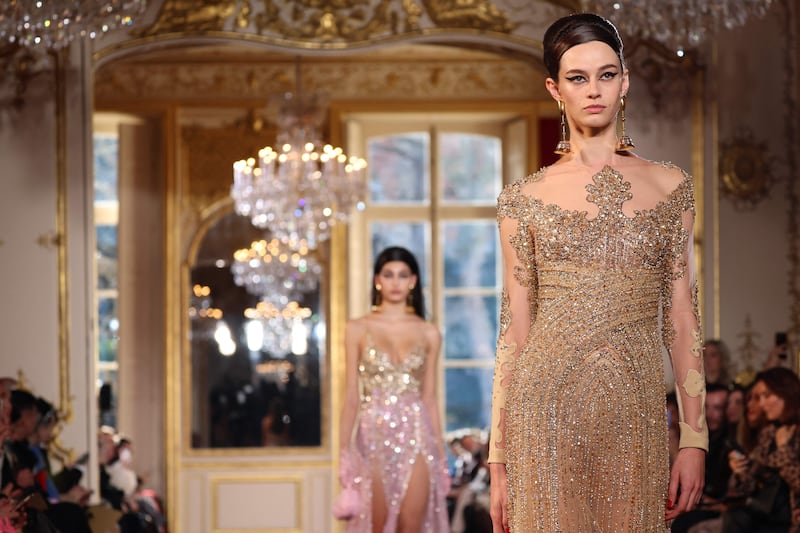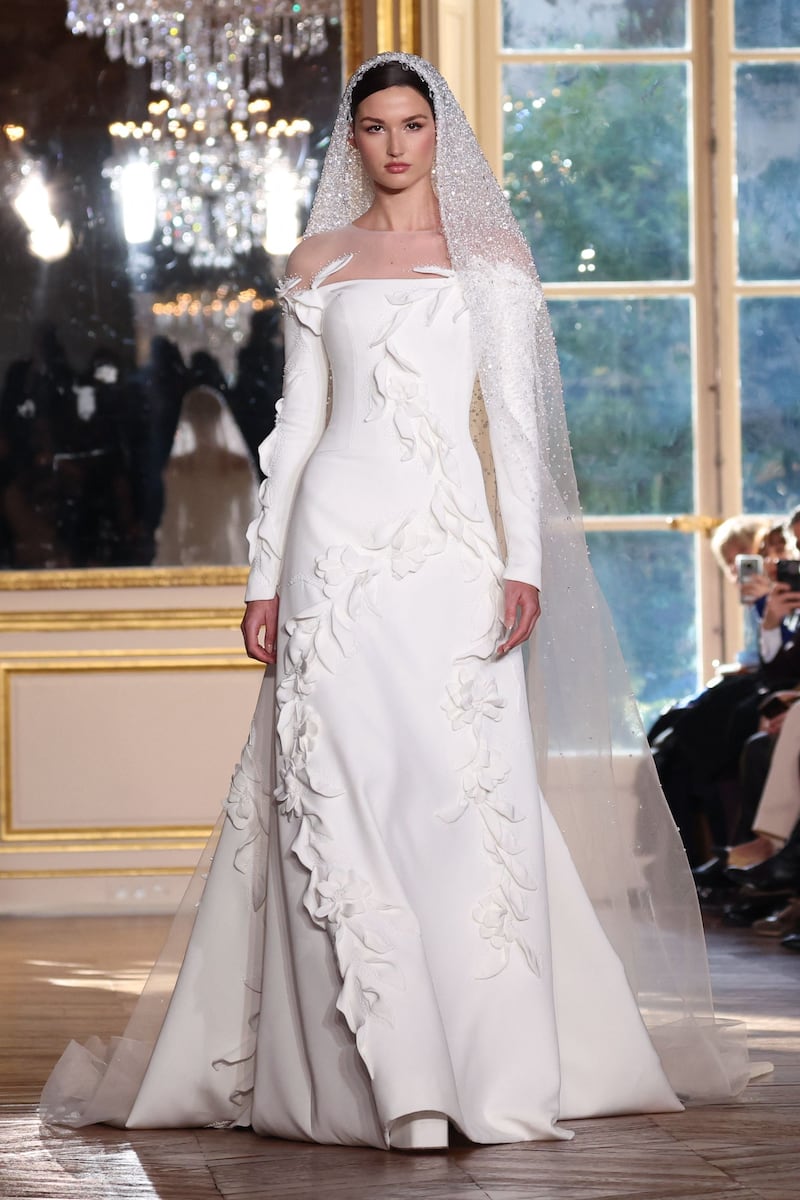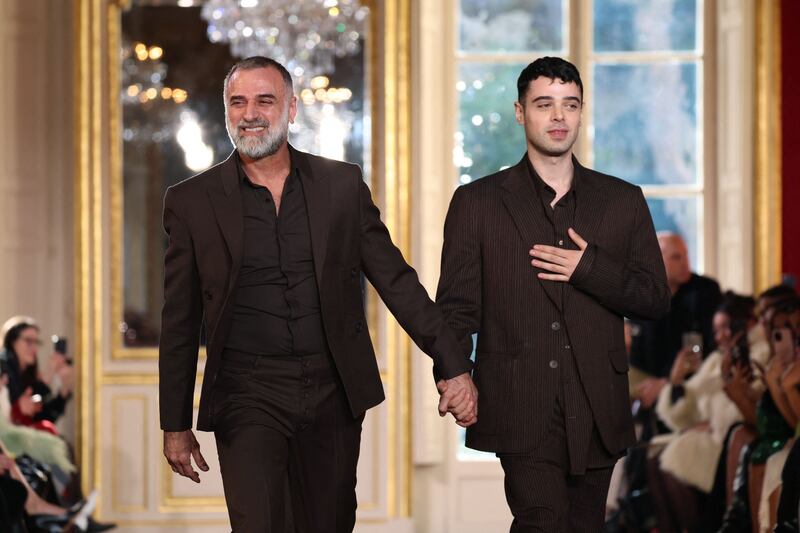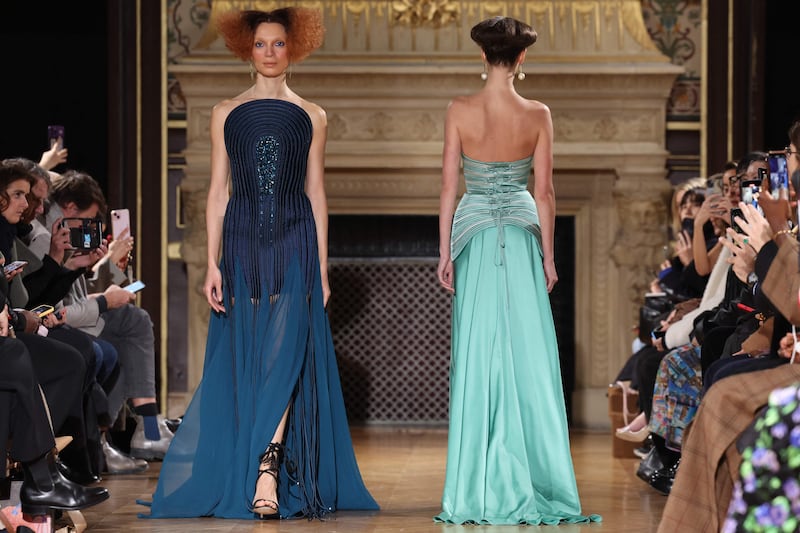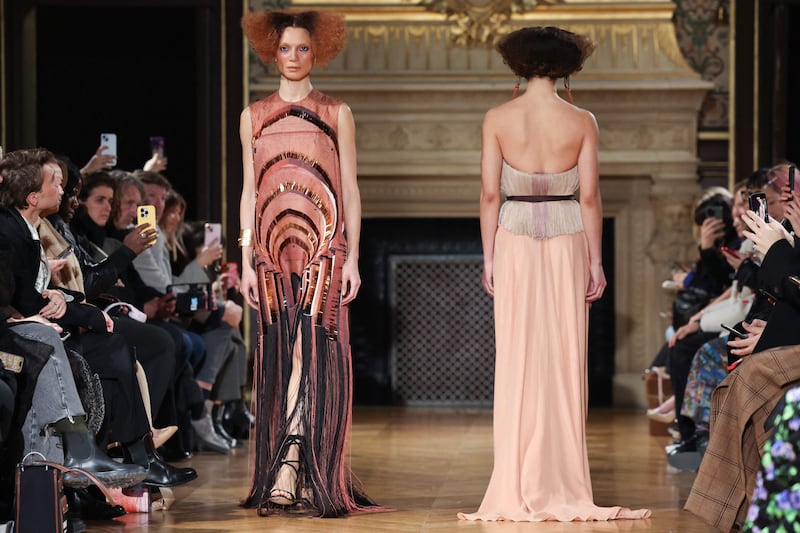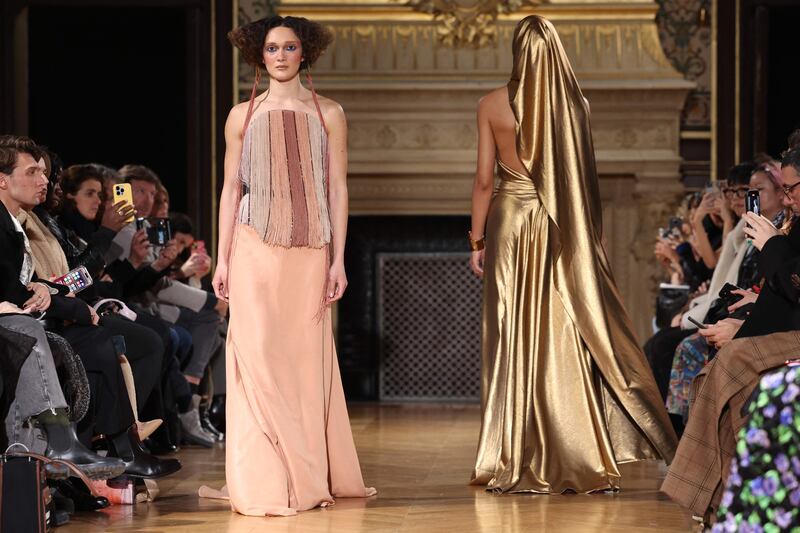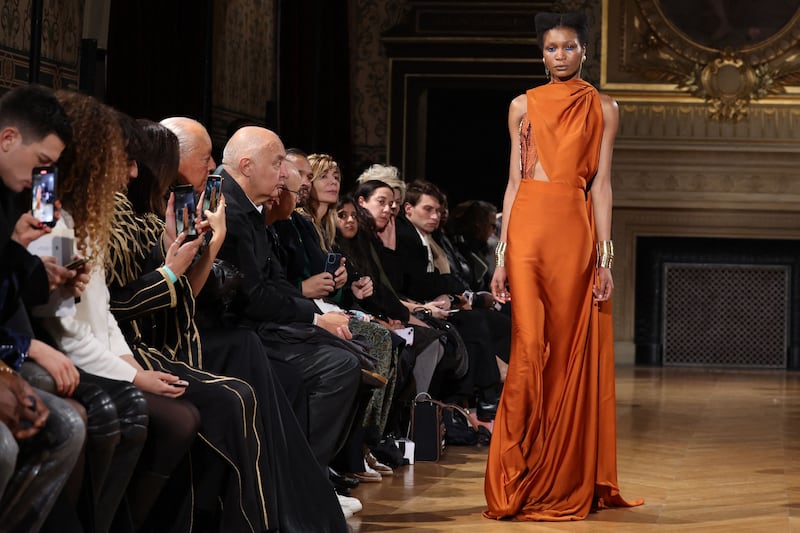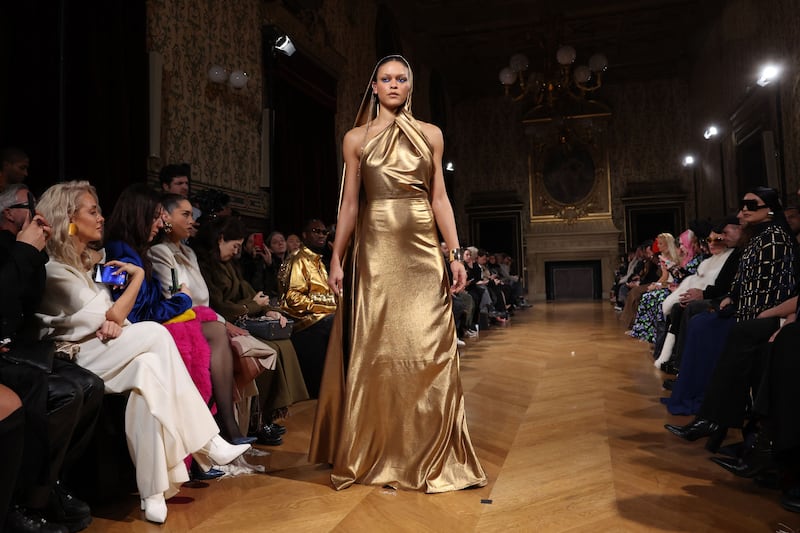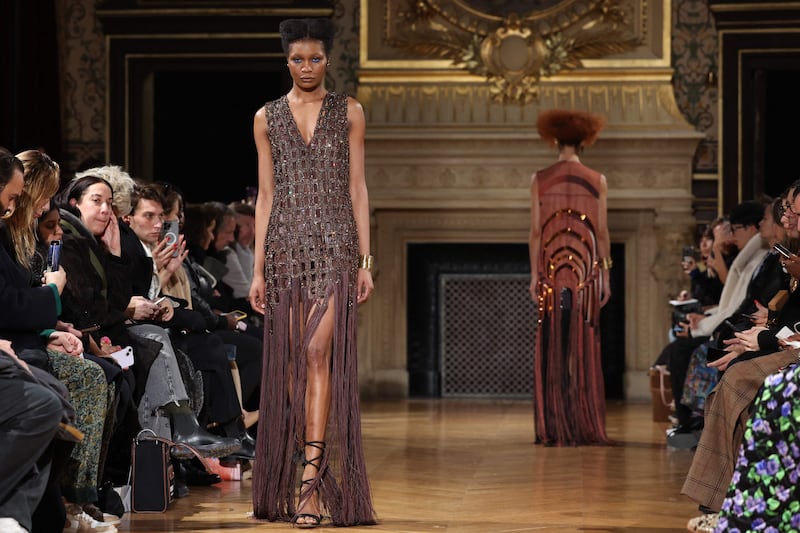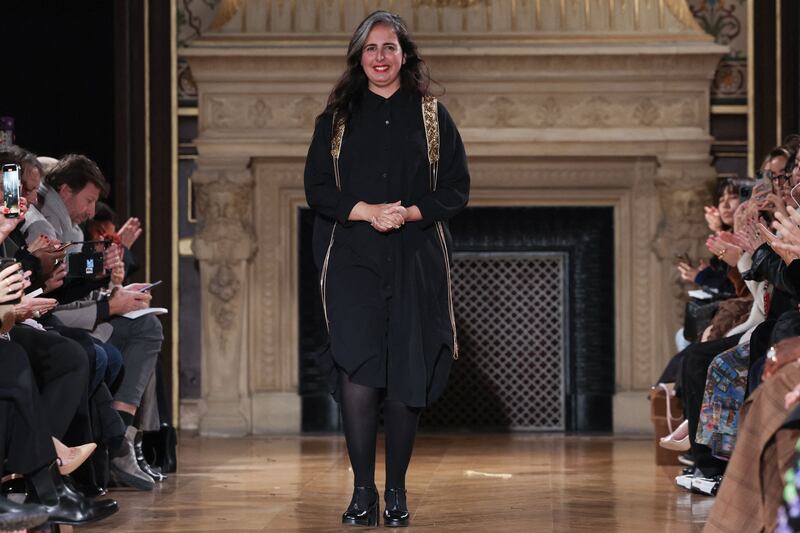Among runway shows by the age-old houses of Schiaparelli and Christian Dior at Paris haute couture week are a sprinkling of modern Arab designers.
Here are some names to know, or to know better.
Zuhair Murad
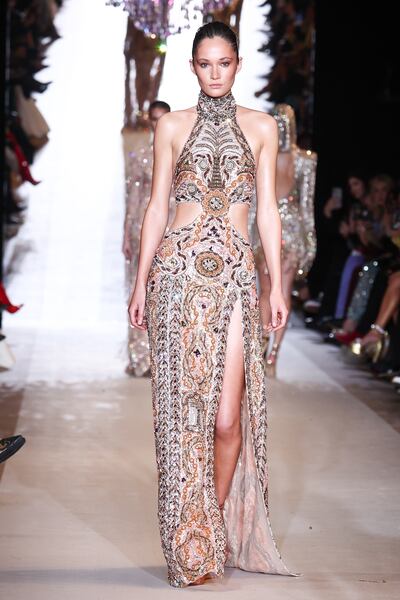
For his latest haute couture collection, Lebanese designer Zuhair Murad looked back at his nation's history and the long-gone days of Phoenicia. Inspired by the "timeless spirit of an inventive civilisation”, Murad drew on Lebanon's location on the Mediterranean Sea, conjuring an “ode to light, waves, wind, marine sparkles and the gentle amber of Mediterranean sunsets”.
This sparkle was translated literally, as intense beadwork that cascaded down outfits, molten metallic fabrics that wrapped around the body and hypnotic, swaying fringes of sequins. In varying shades of gold, from soft ore to warm bronze, and silvers that went from almost translucent to deep pewter, along with nudes, taupe and even a raspberry red, the effect felt like an affirmation of life.
The opening look was a silver halter-neck, floor-length fitted dress that looked like it was put together from looped threads of metallic beads, while a dress and long skirt took their patterning from a mosaic floor, recreated now in thousands of pale beads. Many looks came with boxy, squared-off shoulders, which added a sense of power, while the drapery of togas (and as still seen in saris) arrived as fabric hung from one shoulder, sparking a set of deeply inventive drapes, including one attached to the wrist.
Most of the looks were backless, traversed by simple bandeau straps of sequins, the fragile tracery of mosaics, or the lines of faux jewellery all made in beads, while others were framed with deep cowls of material. With folds of fabric softly wrapped around the hips, or left to flow behind as trains or long sleeves, this collection was highly polished and unapologetically sensual. In other words, signature Murad.
Elie Saab

Looking to Marrakesh and its “magic and allure”, Lebanese designer Saab offered a collection that shimmered like an oasis. Using fabrics that were by and large entirely matte, each look danced with light thanks to the thousands of beads and sequins applied by hand – in tone-on-tone, silver or gold.
The dusty colours of the vibrant Moroccan city arrived as faded periwinkle blue, a soft pink seemingly bleached by the sun, a light green and a wash of sunflower yellow. Even the rich tones of terracotta here were softened into something that felt old and steeped in history.
Already a dab hand at red carpet dressing, here Saab folded the Moroccan djellaba into his lexicon, uplifting it into an elegant over-robe, smothered in decadent beading and held at the waist with a tiny, beaded belt. In another look, it was opened into a cape with the hood trailing down the back as part of an evening dress.
Another mini cape appeared, covered in flowers made from feathers, as elsewhere other dresses seemed to exist only as a lattice of beadwork held together by translucent chiffon, creating a beautiful, weighted swing of the hem with each step.
Saab is in his element with haute couture where he started as a designer, and it clearly runs deep in his blood. This was an exquisite collection by a man at the apogee of his powers.
Rami Al Ali

While not part of the official haute couture schedule, Syrian designer Al Ali also unveiled his high-end collection in Paris at one of the many spin-off events happening off-calendar.
The opening look was a prime example of Al Ali’s skill in sculptural cutting, as a fitted dress in dark cream that arrived with a tiered, asymmetric cowl collar hung off one shoulder, and finished with huge, cuffed sleeves, decorated with tone-on-tone beading.
More structural shapes appeared as a wonderful corset dress, in a burnt coral colour, that had a carved, rigid top half, over a diaphanous skirt. The same colour also arrived as a dress made of layered slices of gossamer chiffon, that had fulsome, rounded sleeves.
Al Ali, who now lives and works in Dubai, also called on the distinctive crosshatch of the Arab keffiyeh for two of his looks – one for men and one for women. The woman’s look had the patterning picked out in black, lozenge-shaped crystals on a pale grey ground, falling away as it reached to the floor. Finished with a sweep of black chiffon at the neckline, it was teamed with earrings that echoed traditional tribal jewellery.
For men, the same lozenge-shaped crystals were now in brown, on a sheer, brown chiffon robe.
Clearly, the designer felt compelled to nod to the long and proud history of Arab culture amid the ongoing bombardment of Gaza.
Georges Hobeika
The Lebanese label showed its spring 2024 haute couture offerings on day one in the French capital.
The Georges Hobeika show stayed true to the brand's DNA of glamorous occasion wear. Speaking to an ultra-wealthy clientele with a busy social calendar, the show featured a 1960s theme, complete with bouffant hairdos.
In a palette that shifted from honeyed nudes through pale lilacs and soft pinks, via seafoam greens into deep, decadent blues and on to fiery red, this was a wardrobe for a multifaceted woman.
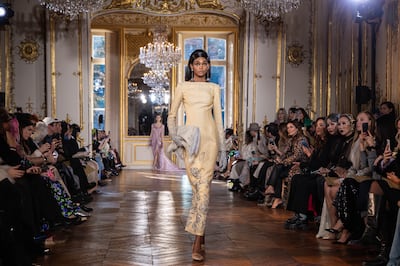
There were snappy day suits in what looked like pink tweed, but was actually a hand-sequinned facsimile; day coats in peppy red; and fragile-looking gossamer gowns in floaty chiffon – all embellished by countless hours of hand-stitched embroidery and beadwork lavished on to the surfaces (this is haute couture, after all).
In 2022, Hobeika senior was joined by his son Jad as co-creative director, as the house looks to broaden its appeal to a younger audience. This was best seen in pared-back looks such as a bright red, strapless gown in high-shine satin that was stripped of all decoration; and a fitted dress in buttermilk with a simple boat neck, its beadwork pooled around the cuffs and skirt hem.
Perhaps best of all, some of these looks were also worn with flat shoes.
Hobeika is best known for its intricate, impeccable surface embellishment, of which there was plenty presented here. From a dress with blue-on-white swirling patterning that felt like Yuan dynasty ceramics, to red sequins that shifted across the body – dense here, lighter there – to the elbow-length opera gloves that had sequins scattered up the arm, fading away in colour and all done in hand-stitched sequins and beading, the effect was ravishing.
With workshops in Beirut and Paris, and now two, not only one creative director, the house of Hobeika is entering a new era. And if the elegant, dressy, sassy couture offering from Paris is anything to go by, that new era looks beautiful indeed.
Maison Sara Chraibi
The Moroccan designer, also exhibiting on day one, delivered an elegant show at the Theatre du Chatelet in colours that riffed on the desert, in fawn, sand, gold and sienna, through to the blues and greens of the evening sky. One of the guest designers invited to be part of the storied haute couture schedule, Chraibi sent out almost every look that was full length and laden with evening drama, with many finished with matching capes.
There were draped dresses in molten gold and glossy sienna brown, which had fabric twisted around the neck and shoulders. These were interspersed with chiffon, some held in a lattice of golden beadwork, others smothered in dense black sequinning.
An opera coat was printed to echo a vaulted passageway with an arched ceiling, recreated in sublime shades of pinky blush and metallics, with the same image reappearing on a sleeveless dress. To ramp up the air of sophisticated drama, many looks were entirely backless – the chiffon twisted and pinned to fall away from the shoulders.
In a game of opposites, tailored coats and languid kaftans had golden embroidery that snaked like topography across the surface, while some flowing chiffon looks were cut to sit right to the arm
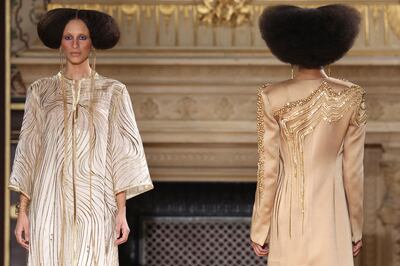
More chiffon was caught in triangles at the waist, in autumnal shades of ochre, sandy brown, burnt umber and coffee. The same colours later appeared as swaying fringing on a bodice, over a long skirt, and as a glossy, floor-length fringed cape – the tendrils held in place with golden jewellery.
Adding to the whole effect was the lacquered hair flipped under to create a wide updo that ended just under the ears, and that nodded to the traditional hairstyles of Moroccan Berbers.
Chraibi creates her collections around the colours and cultures of her native Morocco, and this latest offering delved into those desert lands beautifully. Rich, densely worked and sublimely sophisticated, this was an ode to the landscapes of North Africa.
